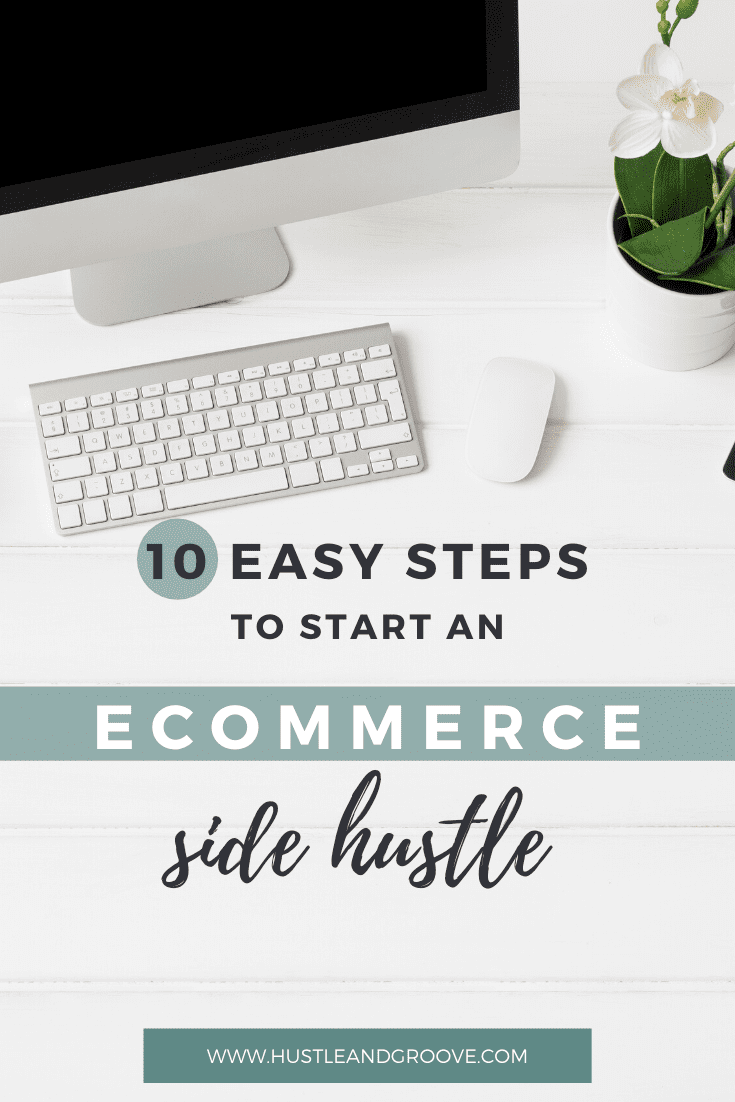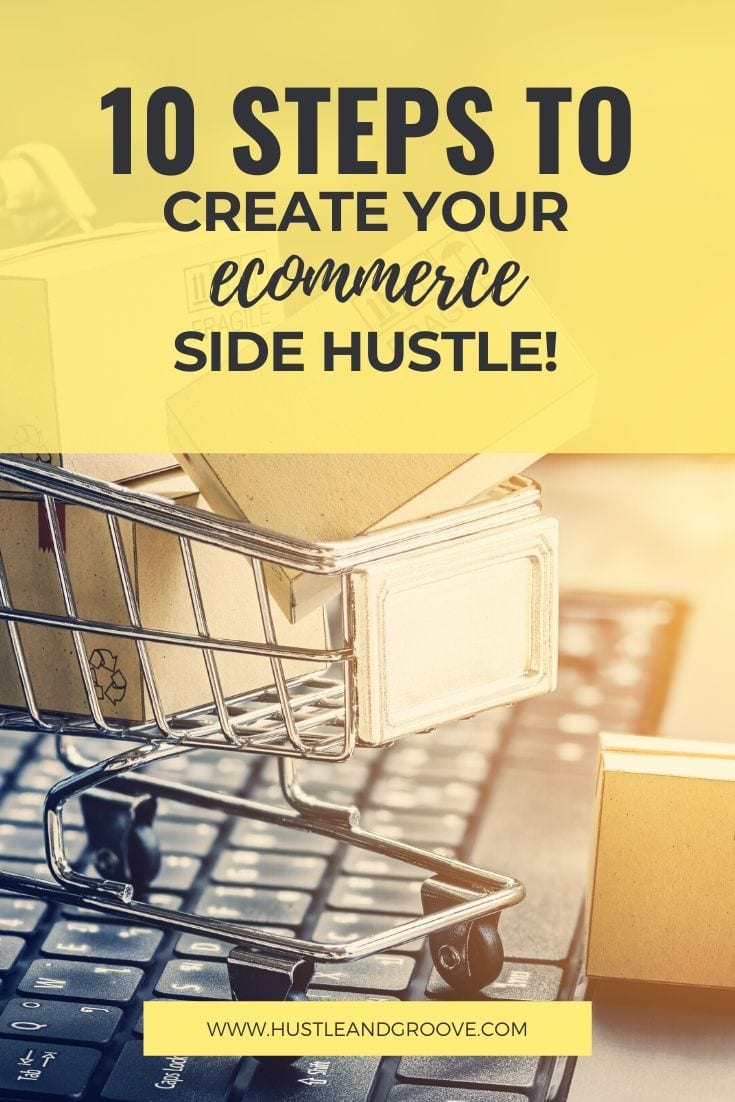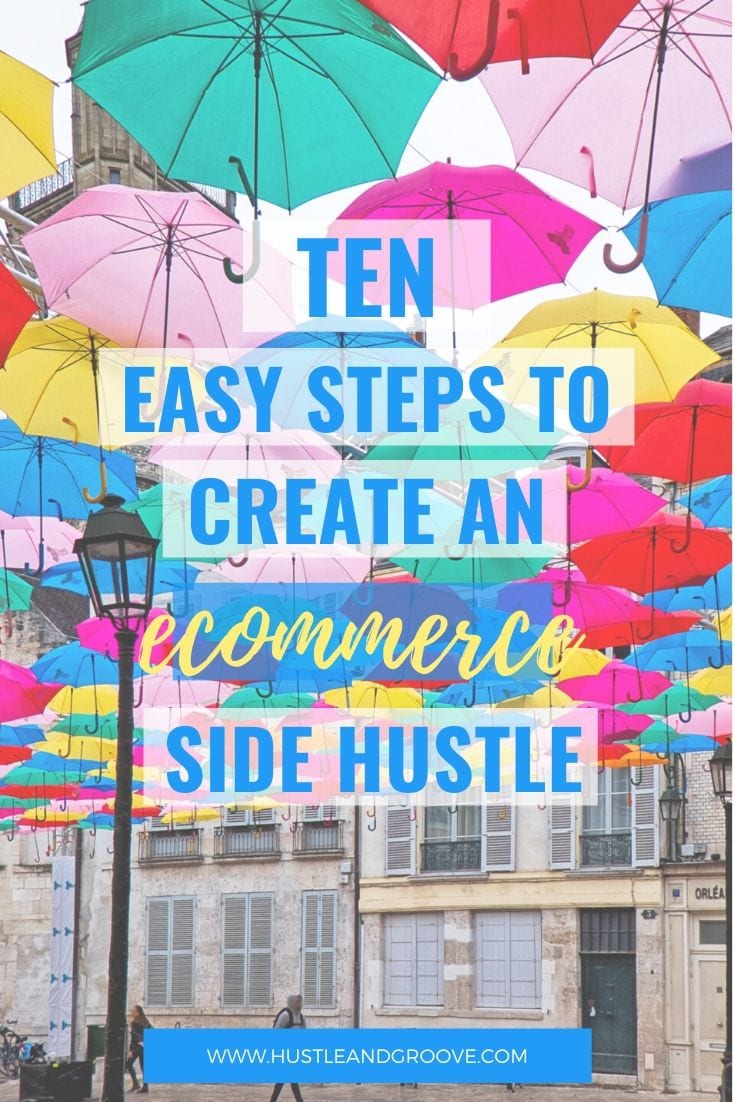Do you feel like a challenge? Perhaps you’ve had a burgeoning idea for an ecommerce side hustle bubbling away for some time now, but you’ve not had the chance to sit down and get started?
Well, now is the time. Take yourself, your laptop and 24 hours – and see what you can accomplish. Setting up an online store might just be easier than you think.
Table of Contents
Setting Up Your Ecommerce Side Hustle in 10 Easy Steps
#1: Choose a product
First things first: what are you going to sell? You must decide this before going any further.
You may be doing this in a day, but bear in mind that you will likely continue this venture, so choose a product that is actually of interest to you – something you won’t be bored of by next week. This way, you’re more likely to stay motivated.
Consult online product lists for inspiration and to see what kind of products are selling well online right now. Areas such as technology and natural health/beauty are very up and coming.
You should also consider the practical implications of your product choice, such as whether it will be easy to ship, what the existing competition is like and whether it requires any time on your end (e.g. if you are making the products yourself).
Spend a little time doing keyword research – there are plenty of free online tools – to figure out what kind of products and queries users are searching for.
#2: Source your supply
Once you’ve settled on a product and you’re feeling confident about it, you need to source it from somewhere. We’re working to 24 hours here, so personal manufacturing time is seriously limited unless you already have a stash of handmade products ready to go.
Drop shipping is likely to be your best friend here.
It’s by far the quickest and simplest option, allowing goods to be packaged and delivered straight from the manufacturer to the customer, with you acting as the intermediary storefront in between.
While it will slightly reduce your profits, the benefit is that it takes a lot of the admin work out of your hands and lets you focus on the customers.
#3: Choose a reliable drop shipper
Luckily there are an awful lot of drop shippers out there to choose from. However, it can be tricky to find one who exactly matches your requirements. A good place to start is with an online dropshipper directory.
Look for a drop shipper who is a good match for you, who is reasonably priced and reliable. Remember, it doesn’t have to be the one that is nearest geographically, as the products will go straight from them to the customer, rather than via you.
When you see one that looks like a good fit, it’s best to give them a call so you can discuss everything in person and get all of your questions answered. Don’t feel obliged to go for the first one you speak to if it doesn’t feel right.
The most important thing to find out is whether the drop shipper will allow you to apply your own branding to the products. This can vary from supplier to supplier.
You want to be able to give the products your own branding to maintain consistency for your customers, whether by adding custom stickers or personalised thank you notes.
#4: Set your price
You have your product, you’ve found a drop shipping supplier and you know what their prices are. Now it’s time to determine your own profit margin and set your prices accordingly.
This is where it’s worth having a snoop at your competitors, to get an idea of how much they are selling similar products for online. You don’t want to aim too high or too low – but settle somewhere reasonable where you will still be able to make a respectable profit.
Here’s more on how to find the right price for your retail products.
#5: Create your brand
Another area where it’s a good idea to check out what your successful competitors are doing – not because you’re going to copy them, but so you can cherry pick the elements that work.
You may discover that there are some common themes that work well, which you can utilise and develop in your own brand, as well as adding in unique details of your own.
If there’s a new angle that doesn’t seem to have been explored, jump on it.
A good place to start is with your brand name. Choosing a brand name is an art in itself.
The best brand names are simple and memorable – think Apple, Netflix, Google. Do some brainstorming and word association around your product to generate ideas, and when you’ve narrowed it down, check which still have the .com TLD available (the preferred choice for businesses) and are not already trademarked.
You don’t want to tread on anyone else’s toes.
#6: Design a logo
Now unless you are a graphic designer, you may struggle with this part. So either keep it very simple, which is fine, or employ a professional to create one for you.
There are some great apps that can help you create your own logo.
Logo makers can be a good place to start, usually coming up with something text-based alongside a small relevant symbol. Colours can be altered accordingly.
When deciding what the primary colour of your brand will be, have a think about colour psychology and what feeling you want to evoke through your brand.
Once you have a logo, be sure to use it everywhere – online, on your product packaging, on social media – to create a clear identity for your brand.
#7: Build your online store
It’s all coming together!
Now is the time to build your beautiful online store and get it customised and filled out with your products, branding and company information.
If it’s your first time attempting something like this, and you want to test the waters, then a good place to start is with a free online store trial that will give you an idea of whether you like the platform before buying.
Using an off-the-shelf online store creator is a great way to get your site up and running quickly. You can choose from a range of different professional themes and create something very sleek and ready optimised for different devices – all without encountering a single line of code.
#8: Craft some content
The content you use on your site is very important, both for customers and SEO. Even on the first day, you want it to appear established enough that your visitors feel a sense of trust – after all, trust leads to sales.
Think about the tone of voice that you want your store to have, and keep it consistent throughout.
You will need to write unique descriptions for your products, as well as for some of the other areas such as the ‘home’ and ‘about’ pages.
Importantly, you should ensure that your target keywords are included (but not stuffed), particularly in the page headings, title, meta-description and tags.
A good tip is to write with your customers in mind. If you were shopping for this product, what would you want to know?
Cover all bases, and if writing is really not your strong point, consider hiring a freelance copywriter to do this for you. Be sure to use a good spelling and grammar tool to identify and correct typos.
#9: Take photos
Product photos are super important in ecommerce – aside from the description, it’s the only basis on which a customer can decide if they like a product and want to buy it.
For this purpose you need to have some product examples you can use, whether it’s a sample provided by your supplier or an image they provide which you can add your branding too. The best option is to take some product photos yourself, using a DSLR or decent smartphone camera.
Take some time to set your product photos up nicely. Ensure you have adequate lighting and think about the setting and any props that will make the product look more appealing.
Take photos from different angles and it’s it’s something you use, try to get a picture of the product in action. Make it easy for the customer to see the product’s benefits.
#10: Let the world know
Once everything is in place, the only thing left is to attract customers. Luckily, Lise has already written a helpful article on how to market a new business in just 30 minutes a day.
There are lots of avenues out there, so it’s a good idea to explore as many as you can. You will want to look at options like social media, product curation sites and Google paid advertising, as well as adopting an SEO strategy long-term.
Making a plan early on is essential.
So how did it go? What did you learn? If you managed to pack all that into one day, congratulations! You’ve accomplished a lot, and you’re all set up to optimise your ecommerce business and help it go from strength to strength.
Keep making improvements, see what works for you and what doesn’t, and most importantly, pay attention to your customers.
[testimonials style=”16″ margin_top=”” margin_bottom=””][testimonial name=”Kayleigh%20Alexandra%20%7C%20H%26G%20Featured%20Writer” company=”Micro%20Startups” href=”www.microstartups.org” image=”http%3A%2F%2Fhustleandgroove.com%2Fwp-content%2Fuploads%2F2017%2F01%2FKayleighpic-150×150.png”]%3Cp%3E%3Cstrong%3EContent%20Marketer%20%26amp%3B%20Startup%20Specialist%3A%C2%A0%3C%2Fstrong%3E%3Cspan%3EPassionate%20about%20writing%20for%20the%20startup%20and%20entrepreneurial%20audience%2C%20I%20have%20recently%20been%20part%20of%20setting%20up%20an%20exciting%20project%20at%20%3C%2Fspan%3E%3Ca%20href%3D%22http%3A%2F%2Fmicrostartups.org%2F%22%3E%3Cspan%3EMicroStartups.org%3C%2Fspan%3E%3C%2Fa%3E%3Cspan%3E.%20We%20donate%20all%20our%20website%20profits%20to%20charities%20that%20help%20people%20reach%20their%20full%20potential.%20Find%20out%20more%20on%20%3C%2Fspan%3E%3Ca%20href%3D%22https%3A%2F%2Ftwitter.com%2Fgetmicrostarted%22%3E%3Cspan%3ETwitter%3C%2Fspan%3E%3C%2Fa%3E%3Cspan%3E.%3C%2Fspan%3E%3C%2Fp%3E%0A
[/testimonial][/testimonials]



1 Response to "How to Set Up Your Ecommerce Side Hustle in a Day"
[…] ManyChat is what Ezra Firestone uses for his eCommerce businesses, and is what we also use in our eCommerce businesses. […]